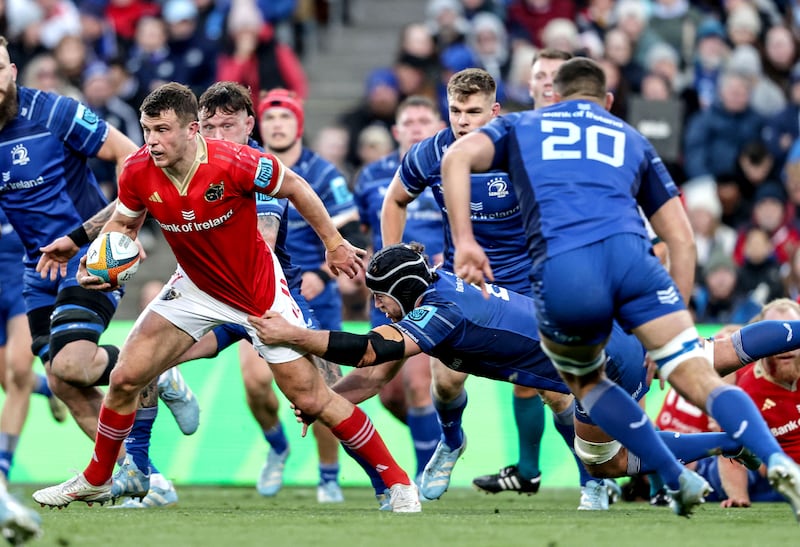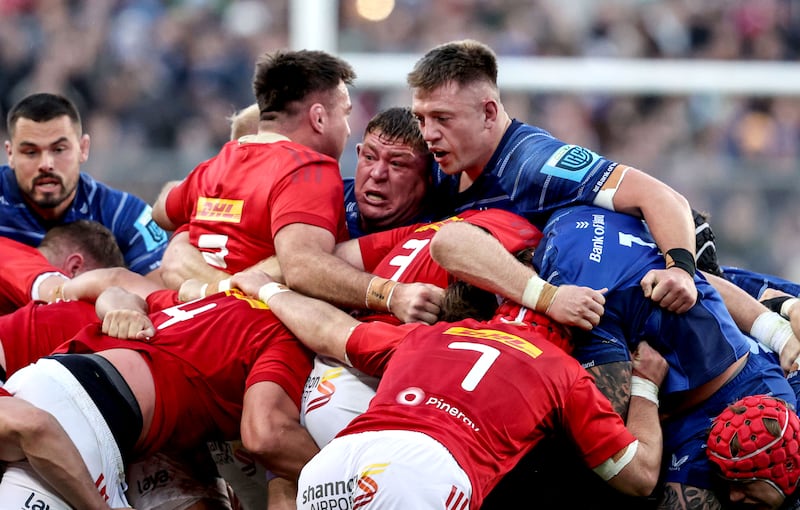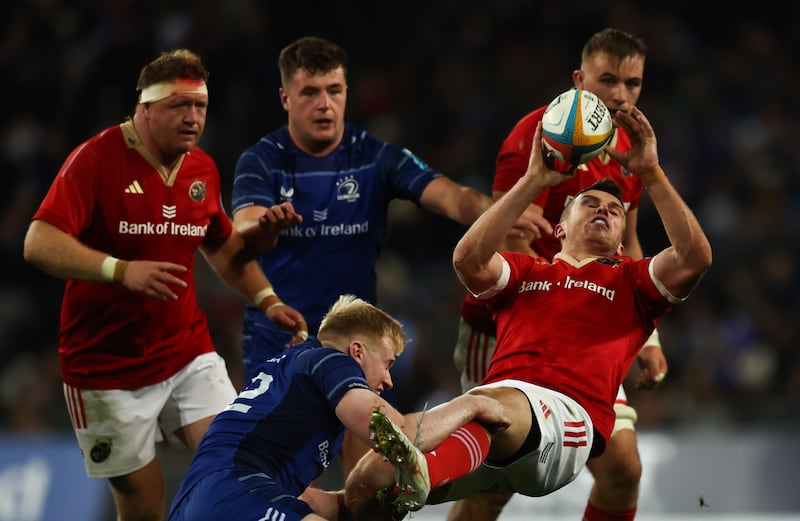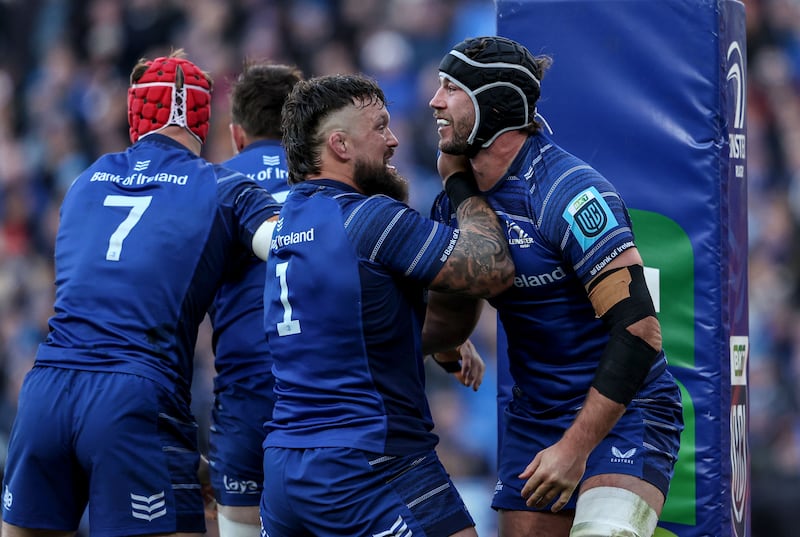Leinster lord it in the skies
Leinster’s lineout work on both sides of the ball was first class during the URC clash at Croke Park. They nicked a handful of Munster throws, James Ryan and replacement Max Deegan sharing those steals, while significantly disrupting several others. The net effect was that Munster not only had to be a little more conservative in their calling, but they saw several excellent attacking opportunities scuppered.
There was one obvious exception and that was Seán O’Brien’s try, cleverly worked from John Hodnett stepping in late to lift Jean Kleyn, and the Munster wing’s timing onto Gavin Coombes inside pass.
In contrast Leinster were able to use this platform to launch their attacks and only on a couple of occasions did a Munster hand (Jack O’Donoghue, Tadhg Beirne) managed to disrupt that streamlined service. The home side might be a little frustrated that they didn’t manage to do a little bit more off this first-phase dominance. Another second-half blank on the scoreboard is a concern.
Farrell and O’Brien make all the running

Munster head coach Graham Rowntree used the word “frustration” to sum up his feelings after the match, a primary strand of which will be that in centre Tom Farrell and left wing Seán O’Brien, Munster had two players that caused their opponents discomfort in beating the tackle or escaping the Leinster press.
READ MORE
It was a brilliant effort from O’Brien considering that he flew back from the Emerging Ireland tour at the beginning of last week. He beat tacklers in very little space and gave his team positive gainlines time and again. Farrell was superb, racking up the most successful carries, defenders beaten and offloads of any player on either team.
A problem was that the team, or the collective, lacked the composure and skills at crucial moments in attack, despite beating more defenders (27 to Leinster’s 14) and making more offloads (14-5) when they had the energy and dynamism to cause all manner of problems before the physical toll rendered them less effective in decision-making and execution.
Leinster more sinners than sinned against

Leinster’s scrum issues continued as they conceded three penalties and a freekick. Referee Chris Busby flip-flopped a little pre- and post-interval in what he penalised and what he let go, certainly there wasn’t consistency, but he decreed that Leinster were more sinners than sinned against.
One of the penalties should have been reversed as Stephen Archer dropped his bind completely before Andrew Porter was pinged for walking around, but he is by no means the only referee to take a dislike to some of Leinster’s scrum work. A hat-tip to 36-year-old Stephen Archer, not only did he knuckle down in the tight but was his team’s leading tackler (17) and the second highest in the game.
Munster loosehead Jeremy Loughman showed courage in defying his cheekbone injury and rapidly closing eye to put in a huge shift. From a Leinster perspective Tadhg Furlong had an excellent game, Porter was omnipresent in the loose while Thomas Clarkson had a pronounced impact including one try-saving tackle.
Osborne shows maturity beyond his years

Jamie Osborne’s all-round game was outstanding. The 22-year-old Leinster centre played with a maturity and eye for detail that belied his years. His option taking was invariably correct and he did a great deal to try and counter Leinster’s lateral drift in attack.
Leinster’s back play was a little bit flat, literally and figuratively, with players only occasionally coming onto the ball from depth and at pace, while there was way too much early passing without fixing any defenders. Individuals tried to remedy the issue, Garry Ringrose, James Lowe and Hugo Keenan did try to step back inside Munster’s drift defence.
Osborne used his footwork and strength to find ‘soft shoulders’ in the Munster defence, throwing in a couple of offloads, while his tackling (100 per cent success rate) was aggressive and powerful, hunting down red-shirted carriers and driving them backwards. His ability to positively influence marquee games across a variety of positions is very impressive.
Doris and Beirne earn the breaks

The ferocity of the breakdown contest meant that neither team maxxed on the speed of the ball that they craved to be able to implement their attacking plans. It will probably come as little surprise that the two players that did most to stifle their opponents’ momentum were the respective captains, Leinster number eight Caelan Doris and Munster secondrow Tadhg Beirne.
Doris, a deserving man-of-the-match, pilfered three turnovers at the breakdown as well as forcing a couple of penalty concessions. It was good to see that his footwork is back in vogue in terms of his carrying – it enabled him to carry around or through a few tacklers.
Beirne managed a couple of steals, as he contested hard in every aspect of the game. His exasperation with some of the decisions that went against his team were understandable. He didn’t allow the frustration to distract him from putting in a typically effective and hard-working shift.














